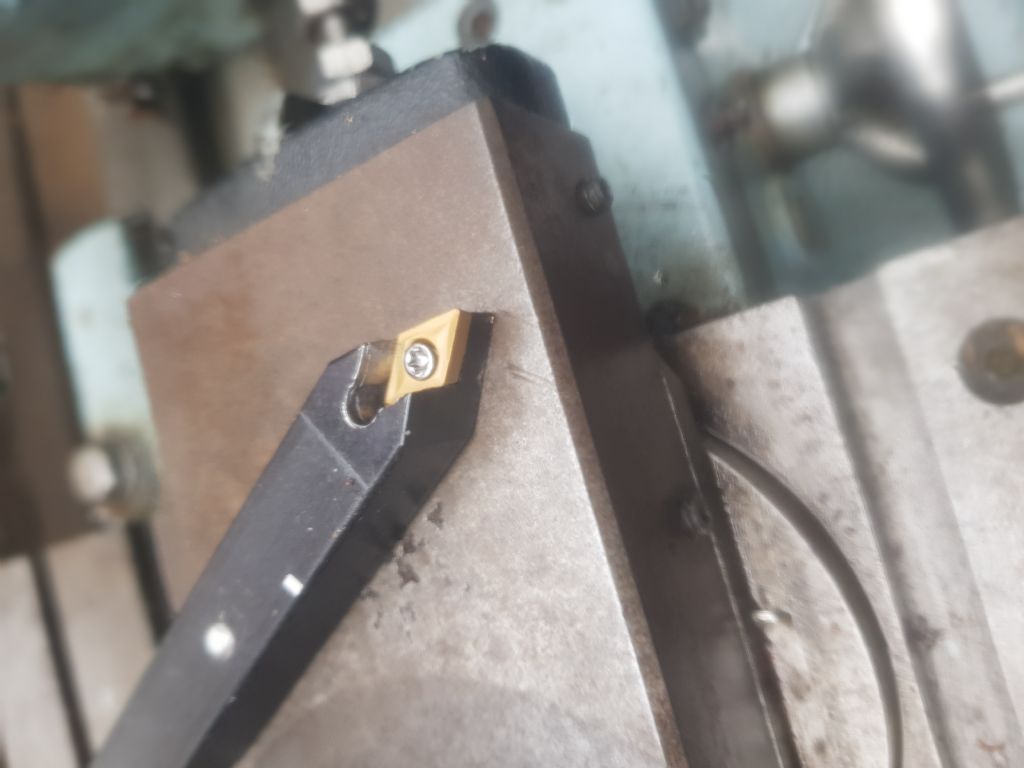My advice is to ditch the QCTP and oversized shanks for the time being. Learn to use the lathe with the standard 4-way tool-post and buy a set of tools to fit it and arrange to height with shims. Keep it simple. Although 12mm tools are common, it's not difficult to find smaller sizes. Have a look at ArcEuro; although Ketan doesn't sell sets (I think), he does individual holders in 6, 8, 10, 12 and 16mm. Rather helpfully, Ketan's web site also identifies the inserts that fit the holders, removing another aggravation.
Exactly why is it necessary to fit a QTCP? Their advantage is fast tool changes and easy height setting without shims, which is particularly useful with HSS cutters. Indexed holders with pre-set shims are almost as fast, and hobbyists rarely work against the clock. I don't care if it takes a couple of minutes to shim a re-sharpened HSS cutter to height. An experienced machinist, who works rapidly with HSS has good reason for fitting a QCTP, but that's not me. Risky to buy a QTCP and shanks to fit a lathe before understanding the tool-height requirements.
Faced with this sort of problem, I think it's better to cut ones losses and go back to basics. Buy tools that fit rather than modify holders, or even worse, hack into the lathe itself.
Beginners have a lot to learn and there is no shame in making mistakes. But a good deal of trouble can be avoided by buying a few books and learning the ropes with a few simple projects before rushing to fit accessories and make changes. I recommend books rather than Internet videos because it's difficult to tell the difference between a twit who is good at making videos, and competent machinists who bumble in front of a camera. Quite a lot of fun to be had on the forum by pointing out bad-practice found on youtube.
In the absence of learning and experience problems are likely to spiral due to poor technique. I wonder how many lose interest in hobby machining due to making a false start? (I came close myself.) For example, Brian mentioned 'fixing' his problem by milling with a Jacob's chuck, which is a classic way of spoiling work. It's almost bound to end in disappointment and a misplaced rant about the quality of Chinese tools. In the early stages best to avoid tricky stuff like milling the unknown steel of a tool-holder with a floppy chuck. (Warning: lots of metals don't machine well! Don't imagine a lathe or milling machine will cut anything made of metal.)
Doesn't take long to get a feel for machining and materials. Apprentices have the advantage of starting with tools in good order, cutting metal that machines reasonably well, with an experienced mentor offering robust advice! Takes longer to teach oneself and mistakes will be made – don't rush it. Think months rather than hours. Three sources of error: machine out of order, poor choice of material, and the operator. At first, the operator is chief suspect when stuff goes wrong, especially when a novice accidentally gets into deep water.
Dave
Edited By SillyOldDuffer on 07/07/2021 09:33:48
Kiwi Bloke.





